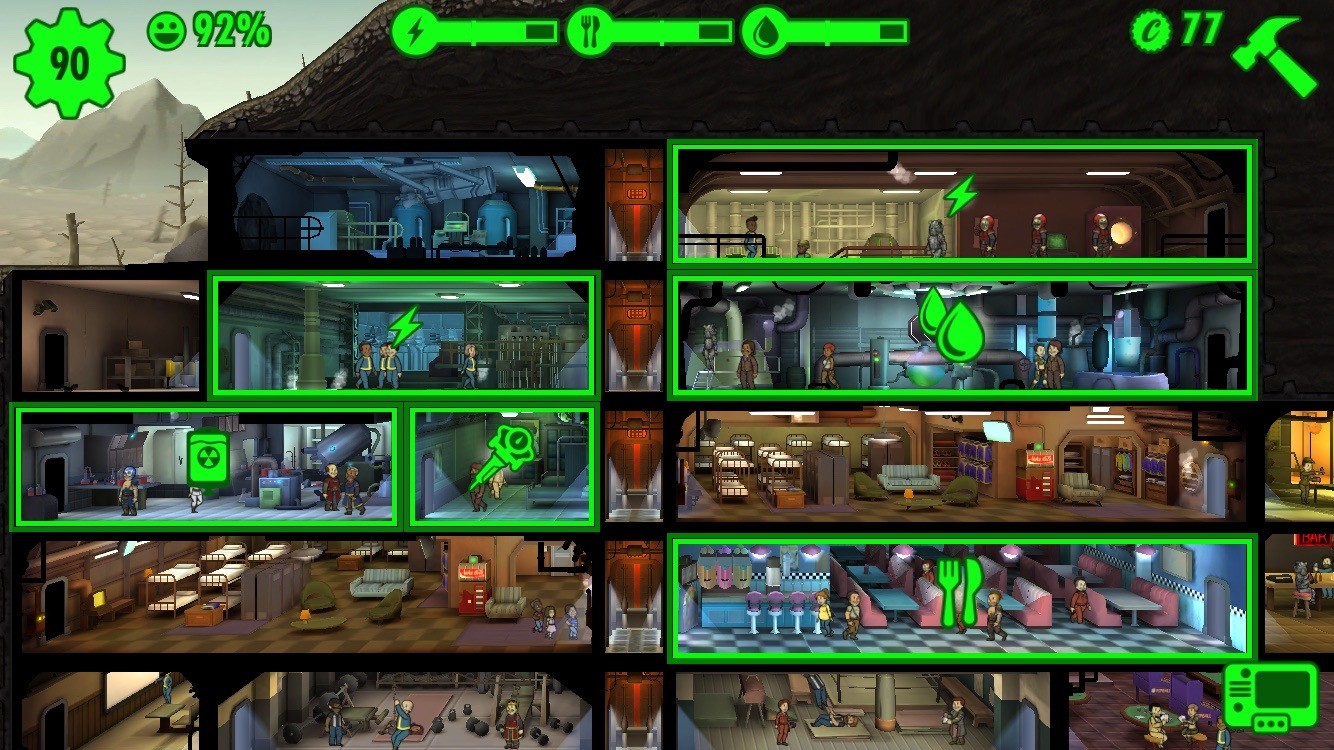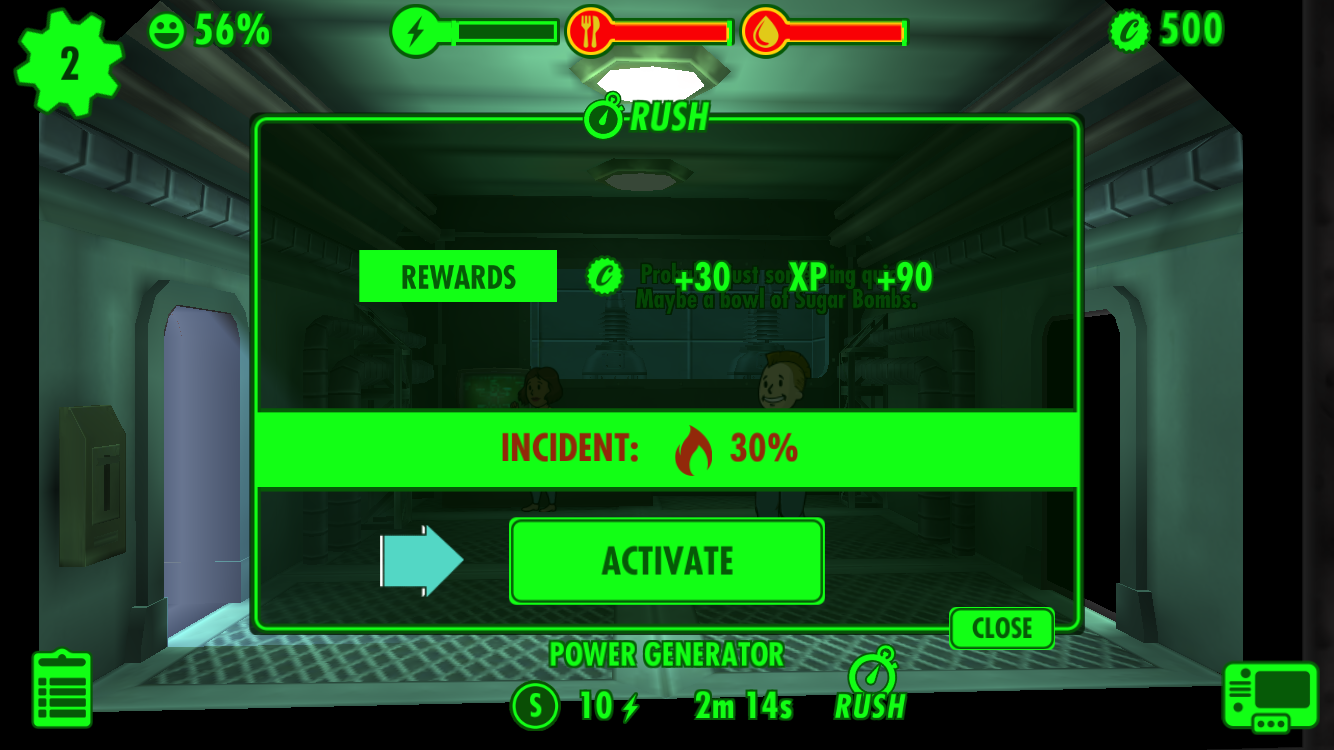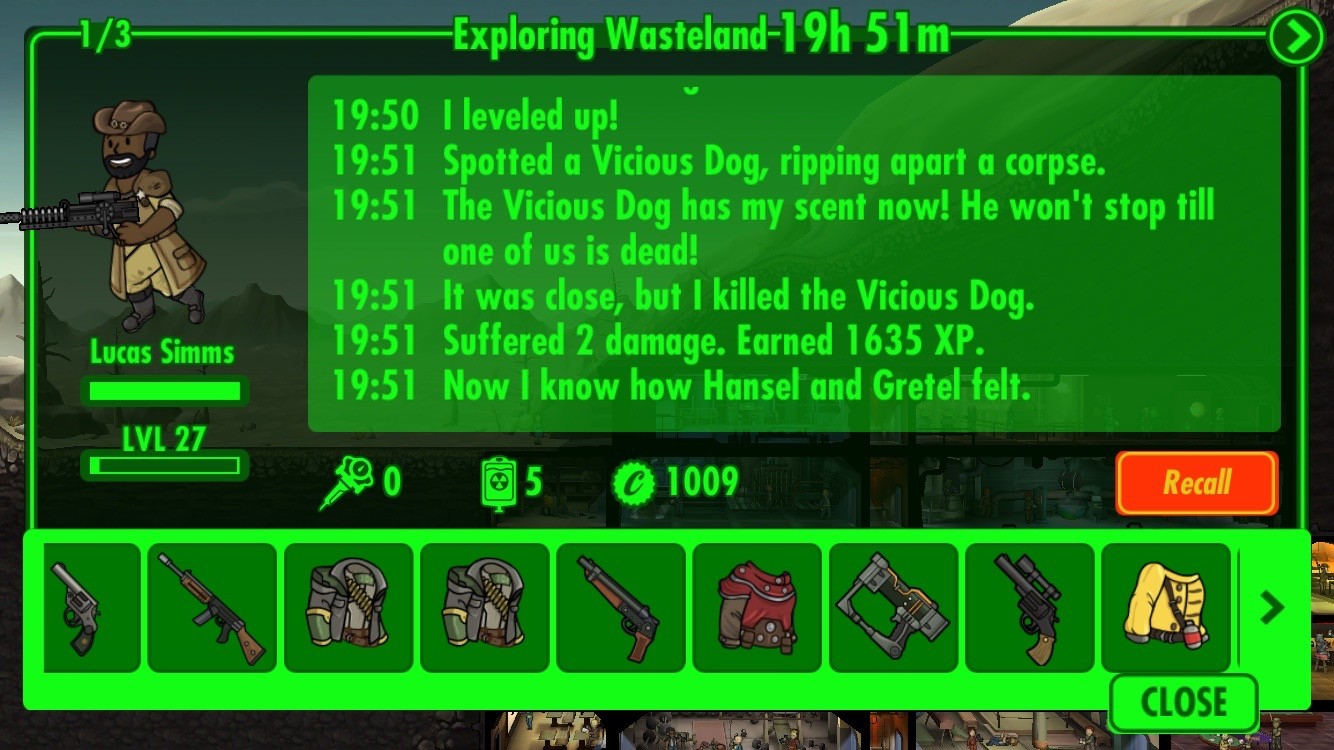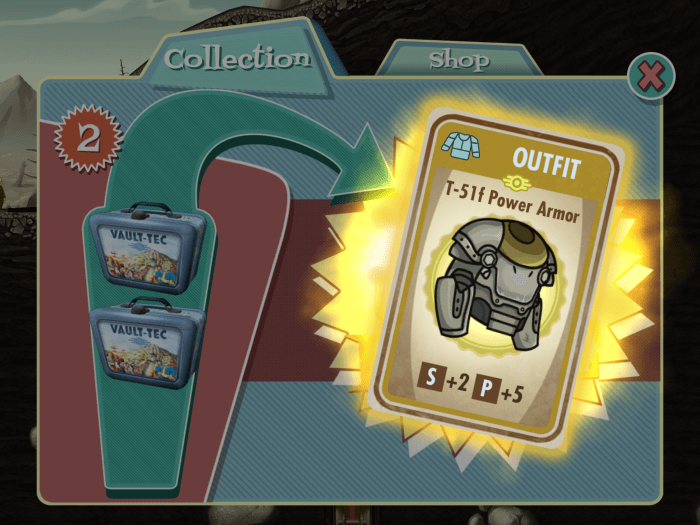Deconstruyendo el refugio nuclear
Fallout Shelter sorprendió a mucha gente cuando alcanzó las listas de mayores ganancias. Muchos (incluyéndome a mí) hemos estado predicando sobre la estasis inmutable que existe en la parte superior de la AppStore, y Bethesda entró y cambió eso por completo.
Cuando el humo se disipó y observo cómo Fallout Shelter desaparece lentamente de los rankings, me quedo con: "Entonces, ¿qué aprendimos?"
No creo que nadie pueda dudar de que la marca Fallout fue enorme para este lanzamiento. Atrajo a jugadores leales e impulsó un crecimiento orgánico masivo en la AppStore. Todos los estudios de juegos desde el lanzamiento de Kim Kardashian by Glu lo saben. Para que el marketing en la AppStore sea asequible, el reconocimiento de la marca es cada vez más importante .
Pero dejando de lado el marketing, lo que me sorprendió fue la respuesta de los jugadores a este juego. Aquí hay un juego que fue desarrollado por un desarrollador tradicional, tomó una marca que a muchos jugadores les encanta (como título premium) y luego la cambió por completo para que sea gratuito. Esto lo hemos visto muchas veces antes de terminar mal (ver Dungeon Keeper , Sonic the Hedgehog ). Entonces, ¿qué tuvo de diferente este lanzamiento?
¿Cómo se convirtió Fallout Shelter en un modelo de diseño gratuito aceptable para los jugadores principales?
#1 Sin límites de sesión arbitrarios
Fallout Shelter nunca obliga a sus jugadores a irse. Siempre hay algo positivo que hacer con tu bóveda. No hay ningún bloqueador como la energía que dice "debes irte ahora". Pero como hemos visto en publicaciones anteriores ( aquí y aquí ), tener un límite de sesiones y progresión es absolutamente necesario para impulsar la retención a largo plazo.
Fallout Shelter emplea lo que me gusta llamar "sesiones flexibles" . El jugador entra al juego, se siente recompensado, pero el juego aumenta lentamente la presión para salir. En lugar de tener un final abrupto de la sesión con energía, Fallout Shelter modifica lentamente la jugabilidad para que tú, como jugador, te sientas inteligente al irte.

Esta es la pantalla típica a la que regresa el jugador cada vez que regresa al juego. Muchas salas con muchos recursos para recolectar. Es muy gratificante volver al juego cada vez.
Cada vez que el jugador ingresa al juego, hay un montón de cosas que lo recompensan. Los tiempos de producción son cortos, por lo que regresar cada 5 a 10 minutos recompensa al jugador con muchos recursos y algunas subidas de nivel ocasionales de sus habitantes. Sin embargo, cuanto más tiempo permanezca el jugador en la sesión, menos gratificante será el juego. Esto se creó intencionalmente para que los jugadores eventualmente opten por abandonar el juego.
Desea crear un diseño de sesión para que el jugador se sienta inteligente al irse. No me dijeron que se fuera.

A good example of the game increasing pressure over a sessionis the “rush” feature. Rushing takes the place of a “skip for premium currency” button which free to play games have. For fallout, the rush feature is no longera monetization feature, it is a session design feature. In the beginning, the player is trained to continually rush production of rooms. This rewards with faster resource productionandbottle caps (a key currency for progression). However, the more you rush a single room, the higher the incident chance will go up. So the more you rush rooms,the more likely a fire or radroach attack happens. The longer you are in the session, the more rooms you rush, the higher risk you have of bad effects. It is strategic to leave and come back later.
Overall the game never really forces the player to leave. Just tries to slowly decrease the value of sticking around. So for core gamers, they never feel like they are being pushed out of the game for no apparent reason, rather they are making strategic choices about when to stay and when to leave.
#2 Disguised Pacing Structures
We can all read from the reviews, forums, and rants that gamers hate timers, pay-to-skip and energy systems. But pacing is the key to long term retention. Without long term retention, a free to play game can’t succeed (more on thishere).
So how do we effectively pace traditional gamers?
Disguise the pacing systems to feel different from traditional free to play systems.
Best example of a disguised free to play mechanic is the wasteland mission system. This system isa version of FarmVille’s “plant and wither” mechanic which drove very strong commitment for players to return. Each time a player would plant a crop, the crop would have a limit of how long it was harvestable. If the player didn’t come back before this time, the plant was withered. The player would not get any value from it.
Plant and wither hasn’t been around for awhile because most designers see that player’s really hate it when their first experience coming back to the game is to be punished for not returning. Punishing players at the level of FarmVille these days results in a high churn rate (a high percentage of players leaving the game). But Clash of Clans, Boom Beach and other “Build Battler” style games have slowly added this punishment back into the toolkit for free to play design. The longer the player is away, the more likely they are to be attacked. When they’re attacked, their precious resources are being stolen.
This fear of losing out on owned items, or “loss aversion”, is a very strong session driver.

Fallout Shelter employsloss aversionwith their wasteland feature. Unless the playercomes back to the game before the dwellerdies in the wasteland, that settler is dead. All those bottle caps and rare equipment the dwellercollected? That’s gone too. Of course the playercan revive the dweller, but this comes at a cost, which rises over time. “Smart” gamers are going to feel good about scheduling their day around avoiding deaths of their dwellers.
For addressing the core audience, designers will have to reverse engineer common pacing systems and rebuild them to feel something very different. The wasteland feature is an excellent example of how to do this.
#3: Gacha
Lastly, targeting their Fallout player audience, Bathesdaknew they needed a fair monetization scheme. The only way to do this is with a Gacha/Card system (more on Gacha here). Fallout Shelter offers no direct purchase of resources. This is the usual method for simulation games. Drive desire for the player to spend when they’ve run out of a specific resource they need.

Fallout Shelter does it differently. Instead of the much-hated resource store, they have a lunchbox gacha system. Each lunchbox contains a random set of cards. Cards can be resources, soft currency, gear, or even rare dwellers. So instead of knowing exactly how much currency you’re going to get, you have the rare chance that you’ll get a rare dweller or rare gearon top of the resources you need. Thus paying for items feels very rewarding versus paying for currencies in other games. You don’t feel like you’re cheating the game (as much) instead you feel like you’re playing the lottery and being rewarded with new toys to play with.
The key that makes this core-gamer friendly is that it is fairbecauseit is luck based. Any player has a chance at the big rare prizes.
It is fair because all players can get lunch boxes from regular play. Playing the game smartly can get you lunchboxes quicker. It also feels fair because the players that pay aren’t really impacting any other player’s experience with the game. Fallout Shelter is not operating in a PvP multiplayer environment. If they were, there would be a lot of pay-to-win criticisms. Because the game is single player, Bethesda had some wiggle room with these pay-to-progress mechanics.
Hearthstone and Contest of Champions has shown that these gacha systems can givelucrative monetization potential. However,the revenue per download of Fallout Shelter over the last few months is much lower than most top grossing games. But when you consider the downloads the game got simply because it took a lighter approach to monetization, this was probably the best choice.
Monetization methods have far more to do with what your audience expects, rather than what would be the best way to make a buck.
The Fall of Fallout Shelter
A pesar de todo lo que he elogiado aquí, el juego finalmente no se mantuvo entre los primeros en recaudación. Si bien inicialmente contó con el apoyo de la marca, al final el juego no se mantuvo en las listas principales debido a la falta de contenido, a no mantener el ritmo suficiente de los jugadores y a la falta de jugabilidad social, lo que llevó a una baja retención a largo plazo.
Al discutir con jugadores de alto nivel, el juego en realidad solo dura un máximo de 2 semanas. Después de esto, no habrá nuevas salas, ni deseo de más habitantes, ni contenido nuevo. No hay ningún objetivo que lograr más que optimizar el diseño de su bóveda. Para que el juego gratuito funcione realmente, tu juego debe durar meses (si no años) .
Entonces, ¿por qué deberíamos empezar siquiera a considerar emular el refugio antiatómico que se construyó?
¿Por qué debería importarnos lo que los jugadores principales piensen de nuestro juego?
Todo se reduce a tu audiencia y a saber qué esperan y qué toleran en las mecánicas de juego gratuito. Los juegos para jugadores de Match 3 del mercado masivo requieren técnicas diferentes a las de los juegos para jugadores de Fallout.
Lo que ha demostrado el refugio nuclear es que la audiencia principal de juegos puede ser un gran punto de inflexión para los juegos gratuitos. Esta audiencia puede hacer crecer un juego de la noche a la mañana que puede apoderarse de las listas de mayores ganancias. Es muy probable que esta audiencia sea la que juegue tu juego durante meses, compitiendo al más alto nivel.Las investigaciones muestran que los que más gastan en dispositivos móviles no son jugadores nuevos, sino jugadores que tienen experiencia jugando y pagando por juegos.
Los jugadores tienen dinero y están dispuestos a gastarlo en juegos que sienten que los tratan de manera justa. Entonces, como desarrollador, si buscas una audiencia más central o intermedia, debes preguntarte: ¿ Qué te enseñó Fallout Shelter?
Leave a Reply